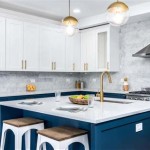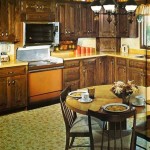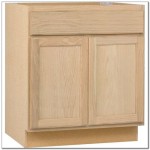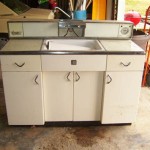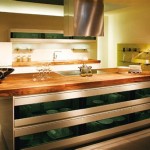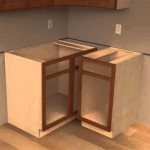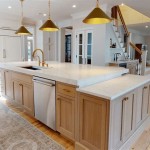Kitchen Cabinets: A Study in White Top, Black Bottom Design
The design of kitchen cabinets profoundly impacts the overall aesthetic and functionality of a kitchen. Among the myriad of cabinet styles available, the "white top, black bottom" configuration has emerged as a popular choice, offering a visually striking and often practical solution for homeowners. This article delves into the nuances of this design trend, exploring its visual appeal, practical considerations, and the factors contributing to its widespread adoption in modern kitchen design.
The concept of "white top, black bottom" kitchen cabinets refers to a design scheme where the upper cabinets are finished in white or a light shade, while the base cabinets are painted or finished in black or a dark shade. This two-toned approach provides a strong visual contrast, creating a dramatic and contemporary look. The specific shades of white and black can vary, ranging from pure white to off-white and from jet black to charcoal gray, allowing for customization based on individual preferences and the overall kitchen design.
The popularity of this design stems from its ability to achieve a balance between brightness and sophistication. White cabinets are known for their ability to reflect light, making a kitchen feel more spacious and airy. Darker base cabinets, on the other hand, ground the space, adding depth and visual interest. This combination can be particularly effective in smaller kitchens, where the white upper cabinets maximize light and create a sense of openness, while the darker base cabinets prevent the space from feeling sterile or bland.
Visual Appeal and Aesthetic Benefits
The primary advantage of the "white top, black bottom" kitchen cabinet design is its strong visual appeal. The high contrast between the white and black creates a focal point and adds a sense of sophistication to the kitchen. This effect is further enhanced by the clean lines typically associated with modern cabinetry, resulting in a sleek and contemporary aesthetic.
The contrast also allows for a more dynamic and visually interesting space. Monochromatic kitchens, while often elegant, can sometimes lack visual depth. The two-toned approach introduces a layer of complexity, preventing the design from feeling monotonous. This design scheme also provides an excellent backdrop for incorporating other design elements, such as colorful backsplashes, statement hardware, and unique countertop materials.
Furthermore, the “white top, black bottom” design can be adapted to suit various architectural styles. While frequently used in modern and contemporary kitchens, it can also be incorporated into traditional designs by choosing softer shades of white and black and incorporating more ornate cabinet styles. The flexibility of this design makes it a versatile choice for a wide range of homeowners.
Another important visual benefit is the ability to accentuate the architectural features of the kitchen. For example, tall ceilings can be emphasized by using white upper cabinets that draw the eye upwards, creating a sense of verticality. The dark base cabinets then ground the space, providing a visual anchor and preventing the room from feeling top-heavy.
Finally, the strategic use of lighting can further enhance the visual appeal of this design. Under-cabinet lighting can highlight the countertop and backsplash, while pendant lights or recessed lighting can illuminate the upper cabinets, creating a warm and inviting atmosphere. The interplay of light and shadow against the contrasting cabinet colors can create a dramatic and visually stunning effect.
Practical Considerations and Functionality
Beyond its aesthetic appeal, the "white top, black bottom" kitchen cabinet design also offers several practical advantages. One of the most significant benefits is its ability to conceal dirt and grime. Base cabinets, particularly those near the floor, are often subjected to more wear and tear and are more likely to accumulate dirt and spills. Darker colors, such as black, are less likely to show these imperfections, making them a practical choice for base cabinets.
Conversely, white upper cabinets can help to maximize light and create a sense of openness, especially in kitchens with limited natural light. White cabinets reflect light, making the space feel brighter and more airy. This is particularly important in smaller kitchens, where maximizing light is crucial for creating a comfortable and inviting atmosphere. This is why painting an entire small kitchen black is almost never done or advised. However, strategically placing black at the bottom can create a very appealing look.
The choice of materials is also a critical consideration in this design. Durable and easy-to-clean materials, such as laminate or painted wood, are ideal for both the upper and lower cabinets. For the base cabinets, opting for a material that is resistant to scratches and stains is particularly important. The choice of hardware can also impact the functionality of the cabinets. Sleek, minimalist hardware in stainless steel or brushed nickel can complement the modern aesthetic of the design, while providing a comfortable and ergonomic grip.
The layout of the kitchen can also influence the effectiveness of the “white top, black bottom” design. In kitchens with a large island, the island can be finished in a contrasting color to the surrounding cabinets, creating a focal point and adding visual interest. For example, a black island can be paired with white perimeter cabinets, or vice versa. This type of contrast requires some planning. It is advisable to consult several photos online before committing to such a bold color contrast.
Another practical consideration is the maintenance of the cabinets. While black cabinets are good at hiding dirt, they can also show fingerprints and smudges more readily than lighter colors. Regular cleaning with a soft cloth and mild detergent is essential for keeping the cabinets looking their best. White cabinets, on the other hand, require careful cleaning to prevent staining and discoloration. Using a non-abrasive cleaner and wiping up spills immediately can help to maintain the pristine appearance of white cabinets.
Factors Contributing to the Popularity of the Design
Several factors have contributed to the widespread adoption of the "white top, black bottom" kitchen cabinet design. One of the primary drivers is the increasing popularity of modern and contemporary kitchen designs. This design scheme aligns perfectly with the clean lines, minimalist aesthetic, and emphasis on contrast that are characteristic of these styles.
The influence of design magazines, home improvement shows, and online platforms such as Pinterest and Houzz has also played a significant role. These sources often showcase kitchens featuring this design, further popularizing the trend and inspiring homeowners to incorporate it into their own homes. The accessibility of design resources has empowered homeowners to make more informed decisions about their kitchen renovations.
Furthermore, the versatility of this design has contributed to its widespread appeal. As mentioned earlier, the "white top, black bottom" scheme can be adapted to suit various architectural styles and personal preferences. By varying the shades of white and black, the cabinet styles, and the hardware selections, homeowners can create a customized look that reflects their unique taste and complements the overall design of their home. This versatility allows for the design to be used in both large and small kitchens.
The ease of implementation is another factor. While a full kitchen remodel can be a significant undertaking, updating the cabinet colors is a relatively straightforward process. Homeowners can either paint their existing cabinets or replace them with new cabinets in the desired colors. This makes the "white top, black bottom" design an accessible option for homeowners looking to update their kitchens without undertaking a major renovation.
Finally, the long-term value of this design should not be overlooked. While trends may come and go, the classic combination of black and white is timeless and versatile. A well-designed kitchen featuring "white top, black bottom" cabinets can add value to a home and appeal to a wide range of potential buyers. This makes it a sound investment for homeowners looking to improve their homes and increase their resale value.
The "white top, black bottom" kitchen cabinet design provides an aesthetic that is both visually appealing and practical. By maximizing light, concealing dirt, and creating a sense of depth, this design scheme offers a compelling solution for homeowners looking to create a modern and functional kitchen space. Its versatility and ease of implementation have contributed to its widespread popularity, making it a prominent design trend in modern kitchen design.

Black And White Kitchen With Top Cabinets Bottom Paired Counter Trendy Tile Upper Interior

White Upper Cabinets And Black Bottom Transitional Kitchen Grey Interior
:strip_icc()/cdn.cliqueinc.com__cache__posts__250323__two-toned-kitchen-cabinets-250323-1519325258540-image.700x0c-61c5b997a59a4cb2a99636b047561d5d-a82f610a1d424c409ffe72b484b6f41a.jpg?strip=all)
30 Stylish Two Toned Kitchen Ideas From An Expert

White Top Cabinets Black Bottom Design Ideas

Black Kitchen Cabinets Make A Bold Statement 23 Effective Ways

White Upper Cabinets And Black Bottom With French Island Transitional Kitchen

52 Black And White Kitchen Cabinets Timeless Look

Blue And White Two Toned Kitchen Cabinets Bella Tucker

Black Kitchen Cabinets The Ugly Truth At Home With Barkers

White Top Cabinets Black Bottom Design Ideas
Related Posts


